Low-code workflow automation helps businesses streamline their operations with minimal coding expertise, marking a significant shift towards more accessible, flexible, and efficient process management. This technology allows users to automate complex business processes through intuitive interfaces that drastically reduce the traditional barriers associated with software development.
The distinction between low code and traditional development platforms is crucial. Low-code platforms are designed to minimize the need for extensive coding, providing a mostly graphical interface to build and automate workflows. While these platforms simplify the majority of tasks, they may still require some programming for advanced customization or complex integrations. Low code solutions are particularly noted for their ease of use and accessibility, making them ideal for a broad spectrum of business professionals, from IT to operational staff.
As businesses increasingly seek streamlined, efficient solutions for workflow management, low-code platforms have surged in popularity. These platforms offer substantial advantages including enhanced productivity, cost savings, and the democratization of technology. They enable organizations of all sizes to implement sophisticated automation solutions that were previously unattainable due to technical complexity or resource constraints.
When selecting a low-code workflow automation platform, businesses should consider several key factors. These include the platform’s ease of use, scalability, integration capabilities, and customization options. The right platform not only meets the immediate needs of a business but also supports its growth and adapts to changing requirements.
In this article, we will delve into the top 10 low code workflow automation software options, exploring their features, benefits, and potential to revolutionize business operations.
Not All Low Code Workflow Tools Are Made the Same
While low-code platforms generally offer similar benefits, not all are created equal. The effectiveness of a low-code tool can vary based on several factors:
- Customization and Flexibility: Some platforms offer extensive customization options that allow businesses to tailor workflows precisely to their needs, while others might be more rigid.
- Integration Capabilities: The ability to seamlessly integrate with existing systems and software varies, which can significantly impact the utility and effectiveness of the platform.
- User Experience: Ease of use can differ greatly between platforms, affecting adoption rates and the speed at which workflows can be implemented and modified.
- Scalability: Some low-code tools are better suited to small businesses or specific departments, while others can scale to support large enterprises with extensive needs.
- Support and Community: The level of support provided by the vendor, along with the robustness of the user community, can influence how quickly users can resolve issues and make the most of the platform.
These differences underscore the importance of carefully evaluating low-code platforms to ensure they align with an organization’s specific needs and long-term strategies. By choosing the right tool, businesses can maximize their investment and enhance their operational efficiency in meaningful ways.
Top 10 Low Code Workflow Automation Platforms:
Now, let’s get into the top 10 low-code workflow automation software platforms that stand out in the market today: Zapier, Make, Cflow, Pipefy, and Airtable. Each of these platforms offers unique features and capabilities designed to streamline business processes efficiently and effectively, without requiring users to write a single line of code. This section will explore the strengths and functionalities of each software, helping you understand which platform could best suit your business needs.
1. Google Workflows
Google Workflows is a low-code no-code workflow orchestration service provided by Google Cloud, designed to sequence and automate tasks across Google services. It is particularly effective for businesses heavily embedded in the Google Cloud ecosystem, looking to automate and optimize their operations without extensive coding.
Key Features:
- Deep Integration with Google Services: Seamlessly integrates with other Google Cloud products like Google Compute Engine, Google Kubernetes Engine, and third-party services using HTTP calls.
- Serverless Execution: Google Workflows is fully managed and serverless, removing the need for users to manage infrastructure, scaling, or provisioning.
- Visual Workflow Editor: Offers a graphical interface to design and visualize complex workflows, making it easier to understand and manage the automation processes.
- State Tracking and Management: Automatically manages the state of workflows, ensuring that tasks are executed in order and as expected, even in the event of failures or retries.
- Simple YAML-based Syntax: Users can define workflows using a straightforward YAML syntax, making the creation and maintenance of workflows accessible even for those with limited programming skills.
Pros:
- Scalability: As a serverless platform, Google Workflows can scale automatically to meet demand without manual intervention.
- Cost Efficiency: Users only pay for the operations executed, making it a cost-effective solution for businesses of all sizes.
- Reliability and Security: Backed by Google’s robust infrastructure, it offers high reliability and compliance with top industry security standards.
- No Maintenance Overhead: Being a fully managed service, it requires no setup, maintenance, or management from the user’s side.
- Quick Deployment: Integrations and workflows can be quickly deployed and modified, speeding up the response to business needs.
Cons:
- Limited to Google Cloud: Best suited for businesses that are already using Google Cloud services, as it is designed to work seamlessly within the Google ecosystem.
- Learning Curve: While the YAML syntax is straightforward, users unfamiliar with Google Cloud’s services may experience a learning curve.
- Customization Limitations: Some users might find the customization options limited compared to more flexible, script-based orchestration tools.
Google Workflows vs. Nected
| Feature |
Google Workflows |
Nected |
| No-code workflow creation |
✅ |
✅ |
| Integration capability |
✅ |
✅ |
| Multi-step workflows |
✅ |
✅ |
| Pre-built templates |
❌ |
✅ |
| Task history and monitoring |
✅ |
✅ |
| Cost-effectiveness |
✅ |
✅ |
| Custom code integration |
❌ |
✅ |
| Dedicated support |
✅ |
✅ |
| User-friendly interface for beginners |
✅ |
✅ |
| Tailored solutions for SMEs |
❌ |
✅ |
Both platforms offer robust solutions for automating and managing workflows, but the choice between them might depend on specific business needs, such as the requirement for pre-built templates or deeper custom code integration.
2. Zapier
Zapier stands as a powerful low-code no-code platform that simplifies the automation of tasks between web apps, enabling users to create workflows that automate time-consuming tasks without needing any coding knowledge. It acts as a bridge between over 3,000 applications, facilitating seamless data flow and task automation across a diverse software ecosystem.
Key Features:
- Intuitive Workflow Creation: Users can easily design custom workflows by connecting apps and defining triggers and actions.
- Vast Integration Capability: Offers connections between over 3,000 web applications.
- Multi-Step Zaps: Allows the creation of complex workflows involving multiple steps and conditions.
- Templates: Provides a wide range of pre-built workflow templates for quick setup.
- Task History: Keeps a record of all executed tasks for monitoring and troubleshooting.
Pros:
- Ease of Use: Zapier's user-friendly interface ensures that anyone can automate tasks without prior technical knowledge.
- Extensive App Ecosystem: Its vast library of app integrations covers nearly every use case imaginable.
- Customizable Workflows: Users have the flexibility to create tailored automation solutions that fit their specific needs.
Cons:
- Cost: While Zapier offers a free tier, advanced features and higher task volumes require a paid subscription, which can get expensive.
- Complexity in Large-Scale Implementations: For extensive and highly complex workflows, users may find the setup and management challenging.
Zapier vs. Nected
| Feature |
Zapier |
Nected |
| No-code workflow creation |
✅ |
✅ |
| Integration capability |
✅ |
✅ |
| Multi-step workflows |
✅ |
✅ |
| Pre-built templates |
✅ |
✅ |
| Task history and monitoring |
✅ |
✅ |
| Cost-effectiveness |
❌ |
✅ |
| Custom code integration |
❌ |
✅ |
| Dedicated support |
❌ |
✅ |
| User-friendly interface for beginners |
✅ |
✅ |
| Tailored solutions for SMEs |
❌ |
✅ |
Zapier excels in providing a vast array of integrations and a user-friendly platform for automating workflows across multiple applications without needing coding skills. However, considering cost and the level of support and customization, Nected emerges as a more cost-effective and supportive solution for businesses seeking tailored automation solutions. While Zapier offers a broad application ecosystem, Nected stands out by offering deeper integration with select apps, personalized support, and customized solutions that cater specifically to small and medium-sized enterprises (SMEs), making it a strong contender for businesses prioritizing value and tailored service.
3. Make
Make, formerly known as Integromat, offers a visual approach to connecting apps and automating workflows, catering to both technical and non-technical users. This platform distinguishes itself through its highly customizable and visual interface, allowing users to design and implement complex workflows with precision and ease.
Key Features:
- Visual Workflow Editor: A graphical interface that enables users to see their automation sequences and how apps connect.
- Complex Workflows: Supports the creation of multi-step workflows that can handle intricate operations and conditions.
- Extensive App Integrations: Provides a wide range of application connections, enabling users to automate tasks across numerous platforms.
- Error Handling: Offers robust options for managing and troubleshooting errors within workflows.
- Webhooks and HTTP Requests: Enables advanced users to extend functionality through webhooks and custom HTTP requests.
Pros:
- Detailed Visualization: The visual nature of the workflow editor makes it easy to understand and optimize processes.
- High Customizability: Users can tailor workflows to very specific requirements, thanks to advanced features.
- Strong Error Management: The platform provides comprehensive tools for identifying and addressing errors.
Cons:
- Learning Curve: The extensive functionalities and options can require a significant time investment to master.
- Pricing for High Volume: Advanced features and higher workflow volumes come at a premium, potentially making it expensive for heavy users.
Make vs. Nected
| Feature |
Make |
Nected |
| No-code workflow creation |
✅ |
✅ |
| Integration capability |
✅ |
✅ |
| Multi-step workflows |
✅ |
✅ |
| Pre-built templates |
✅ |
✅ |
| Task history and monitoring |
✅ |
✅ |
| Cost-effectiveness |
❌ |
✅ |
| Custom code integration |
❌ |
✅ |
| Dedicated support |
❌ |
✅ |
| User-friendly interface for beginners |
❌ |
✅ |
| Tailored solutions for SMEs |
❌ |
✅ |
Make offers a visually intuitive platform for designing and executing complex automation workflows with an emphasis on customizability and control. While its visual workflow editor and error-handling capabilities are highlights, the platform's learning curve and potential costs for high-volume usage present challenges for some users. Compared to Nected, Make offers a robust solution for users seeking advanced workflow customization options, but Nected provides a more accessible, cost-effective, and supported environment for businesses, particularly SMEs seeking to automate their processes efficiently.
4. Microsoft Power Automate
Microsoft Power Automate, formerly known as Microsoft Flow, is an integral part of the Microsoft ecosystem designed to help businesses automate workflows and improve productivity across various applications and services. It is particularly powerful for organizations that utilize Microsoft 365 services extensively.
Key Features:
- Extensive Integration with Microsoft Products: Power Automate offers deep integration across all Microsoft services including Office 365, SharePoint, and Dynamics 365, as well as popular third-party services like Twitter, Dropbox, and Google services.
- Pre-built Connectors: Features hundreds of pre-built connectors that allow users to orchestrate actions across a wide range of apps without detailed coding.
- Robust Template Library: Provides a vast library of templates that users can utilize to quickly set up complex workflows, significantly reducing the development time and learning curve.
- UI Flows: Allows for the creation of UI flows to automate legacy applications and processes that cannot be integrated via APIs.
- Conditional Logic: Supports advanced conditional logic that can be applied to workflows, enabling more nuanced and sophisticated automation scenarios.
Pros:
- Seamless Integration: Its native integration with Microsoft products simplifies the automation of workflows that involve any Microsoft service or application, enhancing productivity and collaboration.
- Ease of Use: The drag-and-drop functionality and intuitive design make it accessible for non-technical users to set up and manage workflows.
- Scalability: Capable of supporting a wide range of workflow complexities, from simple to highly complex automation needs.
- Enhanced Productivity: Automates time-consuming, repetitive tasks, allowing staff to focus on higher-value work.
Cons:
- Dependence on Microsoft Ecosystem: While it offers excellent support for Microsoft applications, organizations not deeply embedded in the Microsoft ecosystem might find it less beneficial.
- Complex Pricing: The pricing model can be complex and might get expensive as needs scale, particularly for large numbers of users or high-frequency automated tasks.
Microsoft Power Automate vs. Nected
| Feature |
Microsoft Power Automate |
Nected |
| No-code workflow creation |
✅ |
✅ |
| Integration capability |
✅ |
✅ |
| Multi-step workflows |
✅ |
✅ |
| Pre-built templates |
✅ |
✅ |
| Task history and monitoring |
✅ |
✅ |
| Cost-effectiveness |
❌ |
✅ |
| Custom code integration |
☑️ |
✅ |
| Dedicated support |
✅ |
✅ |
| User-friendly interface for beginners |
❌ |
✅ |
| Tailored solutions for SMEs |
☑️ |
✅ |
This comparison highlights that while Microsoft Power Automate excels within the Microsoft ecosystem and offers a user-friendly platform with extensive pre-built templates, Nected provides broader flexibility, especially in terms of cost-effectiveness and custom code integration. For businesses looking for a versatile orchestration tool that aligns well with non-Microsoft technologies, Nected might offer additional advantages.
5. Airtable
Airtable is a unique blend of a database and a spreadsheet, offering a versatile LCNC platform for creating, organizing, and sharing information. It excels in workflow automation by allowing users to connect different pieces of data in meaningful ways, facilitating automated actions based on predefined triggers. This hybrid nature makes Airtable an attractive solution for teams seeking flexibility in managing projects, tasks, and data-driven workflows.
Key Features:
- Customizable Views: Users can tailor views to their needs, whether in a grid, calendar, Kanban, or gallery format.
- Rich Field Types: Supports a wide variety of data types, including text, numbers, checkboxes, attachments, and links to records in other tables.
- Blocks: Offers a range of 'blocks' or apps that can add functionality to your bases, like charts, maps, and time tracking.
- Automations: Enables the creation of automated tasks, notifications, and emails based on specific triggers within the database.
- Integration Capability: Connects with various apps and services to extend functionality and automate workflows across platforms.
Pros:
- Versatility: Its spreadsheet-database hybrid design is highly adaptable for various use cases, from project management to CRM.
- Ease of Use: The intuitive interface and customizable views make it accessible for users of all skill levels.
- Powerful Automation: Users can set up complex automations directly within their bases, enhancing productivity without needing external tools.
Cons:
- Learning Curve for Complex Features: While basic use is straightforward, leveraging the full range of capabilities may require a learning investment.
- Cost for Advanced Features: Higher-tier plans, necessary for access to more advanced features and automations, can be costly.
Airtable vs. Nected
| Feature |
Airtable |
Nected |
| No-code workflow creation |
✅ |
✅ |
| Integration capability |
✅ |
✅ |
| Multi-step workflows |
✅ |
✅ |
| Pre-built templates |
✅ |
✅ |
| Task history and monitoring |
✅ |
✅ |
| Cost-effectiveness |
❌ |
✅ |
| Custom code integration |
✅ Limited |
✅ |
| Dedicated support |
❌ |
✅ |
| User-friendly interface for beginners |
✅ |
✅ |
| Tailored solutions for SMEs |
❌ |
✅ |
Airtable stands out for its innovative approach to workflow automation, combining the functionalities of databases and spreadsheets to offer a versatile platform for managing and automating tasks. Its customizable features and powerful automation tools provide a solid foundation for creating efficient workflows. However, when it comes to affordability and support for more complex, code-based customizations, Nected offers distinct advantages, particularly for small and medium-sized enterprises looking for cost-effective, scalable solutions with comprehensive support.
6. Cflow
Cflow is a cloud-based workflow automation tool designed to streamline business processes by automating repetitive tasks and improving operational efficiency. It caters to various business functions, including HR, finance, sales, marketing, IT, and procurement. While Cflow offers a comprehensive open-source core, it also includes some proprietary features and services.
Key Features:
- Visual Workflow Builder: Cflow provides a user-friendly, no-code visual builder that allows users to create workflows using a drag-and-drop interface. This feature makes it accessible to users with minimal technical expertise.
- Pre-built Templates: The platform offers numerous pre-built templates for common business processes, which can be customized to meet specific needs. This accelerates the implementation of automated workflows.
- Extensive Integrations: Cflow integrates with over 1,000 third-party applications, including popular tools like Slack, Salesforce, QuickBooks, Google Sheets, and more. This integration capability ensures seamless connectivity across various platforms.
- Real-time Notifications and Auto Approvals: Users receive real-time email notifications for workflow events, and the system can be configured for auto approvals to expedite non-critical tasks.
- Document Management and E-signature: Cflow includes features for managing documents, securing them on a cloud-based platform, and incorporating e-signature capabilities for streamlined approvals.
- Customizable Dashboards and Reports: The platform provides robust analytics and reporting tools, enabling users to track workflow performance and gain insights into process efficiency.
Pros:
- Ease of Use: The intuitive drag-and-drop interface simplifies workflow creation and management, making it accessible to non-technical users.
- Comprehensive Integration: With a wide range of supported integrations, Cflow connects seamlessly with various tools and applications businesses use.
- Productivity Boost: Automating repetitive tasks saves time, reduces errors, and allows employees to focus on more strategic activities.
- Scalability: Cflow is suitable for businesses of all sizes, from small startups to large enterprises, due to its flexible and scalable design.
- Cost-effective: Cflow's pricing plans are designed to be budget-friendly, providing value for money with extensive features.
Cons:
- Complexity for Advanced Workflows: While the basic setup is straightforward, creating highly complex workflows may require a deeper understanding of the platform's features.
- Customization Limitations: Users may encounter limitations in customizing certain aspects of workflows compared to more advanced automation tools.
Nected vs. Cflow
| Feature |
Nected |
Cflow |
| User-friendly interface for beginners |
✅ |
✅ |
| Low code/ No-code workflow creation |
✅ |
✅ |
| Integration with multiple data sources |
✅ |
✅ |
| Custom code integration |
✅ |
❌ |
| Real-time monitoring and alerts |
✅ |
✅ |
| Task automation beyond data pipelines |
✅ |
✅ |
| Dedicated support |
✅ |
❌ |
| Cloud-native support |
✅ |
✅ |
| Scalability |
✅ |
✅ |
| Pre-built templates |
✅ |
✅ |
| Version control and rollback |
✅ |
❌ |
| Approval flow |
✅ |
✅ |
| Parallelism in conditions inside workflows |
✅ |
❌ |
Cflow is a versatile workflow automation tool offering a user-friendly interface, extensive integrations, and scalability, making it suitable for various business needs. Its core functionality is open-source, but some advanced features and services are proprietary. Cflow is ideal for businesses looking to automate tasks, improve productivity, and streamline operations efficiently.
7. Hive
Hive is a comprehensive project management and workflow automation tool designed to enhance collaboration and productivity across teams. It offers a range of features that make it suitable for various business needs, from project planning and task management to automation and integrations. While Hive is primarily a proprietary tool, it offers robust functionalities and extensive integration options.
Key Features:
- Visual Workflow Builder: Hive provides a user-friendly, drag-and-drop interface for creating workflows and automating repetitive tasks. This simplifies the process of managing complex workflows without requiring coding knowledge.
- Multiple Project Views: Users can manage projects using various views, including Gantt charts, Kanban boards, calendar views, and table views. This flexibility allows teams to choose the view that best suits their workflow.
- Collaboration Tools: Hive includes built-in messaging, video chat, and real-time collaboration features, allowing teams to communicate effectively and stay aligned on project goals.
- Automation and Integrations: The platform supports over 1,000 integrations with tools like Slack, Google Drive, and Salesforce. It also allows users to create custom automation workflows to streamline processes and reduce manual tasks.
- Time Tracking and Resource Management: Hive offers time tracking and project resourcing features to ensure projects stay on track and resources are allocated efficiently.
- Proofing and Approvals: Hive’s proofing tools allow teams to review and approve documents, images, and other assets within the platform, streamlining the feedback process.
Pros:
- Ease of Use: The intuitive interface and drag-and-drop workflow builder make Hive accessible to users of all technical levels.
- Flexibility and Customization: Hive’s multiple project views and extensive integration options allow teams to customize the platform to their specific needs.
- Collaboration and Communication: Built-in messaging and video chat features enhance team collaboration and streamline communication.
- Comprehensive Automation: Hive’s automation capabilities help reduce manual tasks, improving efficiency and productivity.
Cons:
- Cost: While Hive offers robust features, the cost can add up, especially for larger teams or those requiring advanced features and extensive integrations.
- Learning Curve for Advanced Features: Leveraging advanced automation and custom workflows may require a deeper understanding of the platform.
Nected vs. Hive
| Feature |
Nected |
Hive |
| No-code workflow creation |
✅ |
✅ |
| Integration with multiple data sources |
✅ |
✅ |
| Customizable workflows |
✅ |
✅ |
| Real-time monitoring and alerts |
✅ |
✅ |
| Task automation beyond data pipelines |
✅ |
✅ |
| Dedicated support |
✅ |
❌ |
| User-friendly interface for beginners |
✅ |
✅ |
| AI and Intelligent Document Processing |
❌ |
❌ |
| Reporting and analytics |
✅ |
✅ |
| Mobile access |
✅ |
✅ |
| Version control and rollback |
✅ |
❌ |
| Approval flow |
✅ |
✅ |
| Parallelism in conditions inside workflows |
✅ |
❌ |
Monday is a robust and flexible workflow automation tool suitable for a variety of business needs. Its visual builder, extensive integrations, and customizable dashboards make it a powerful platform for enhancing productivity and collaboration. While it includes advanced features and integrations that are proprietary, its comprehensive capabilities justify the investment for many businesses.
8. Kissflow
Kissflow is a low-code workflow automation platform designed to streamline and optimize business processes. It offers a comprehensive set of features that enable businesses to automate tasks, manage projects, and enhance team collaboration. Kissflow is known for its user-friendly interface and extensive customization capabilities, making it a versatile tool for various industries.
Key Features:
- Customizable Workflows: Kissflow allows users to create and modify workflows to fit specific business needs using a low-code, drag-and-drop interface.
- Integration with Popular Tools: It integrates with various tools such as Google Workspace, Microsoft Office, and more, facilitating seamless workflow automation.
- Advanced Reporting and Analytics: Provides robust reporting tools to track and analyze workflow performance, offering deeper insights through user-friendly dashboards.
- Collaboration Tools: Includes features for task assignment, real-time notifications, and communication, enhancing team collaboration.
- Mobile Access: The mobile app ensures that users can manage workflows on the go, though it is less comprehensive than the desktop version.
- Process and Project Management: Combines workflow and project management capabilities, offering a unified platform for both.
Pros:
- Ease of Use: Intuitive interface and low-code environment make it accessible to non-technical users.
- Customization: Highly customizable workflows and templates cater to specific business processes.
- Scalability: Suitable for both small teams and large enterprises due to its scalable nature.
- Integrated Process Management: Combines project and process management for comprehensive workflow solutions.
Cons:
- Learning Curve: Users may experience a learning curve, particularly with the extensive customization options.
- Cost: Higher pricing can be a barrier, especially for small businesses.
Nected vs. Kissflow
| Feature |
Kissflow |
Nected |
| No-code workflow creation |
✅ |
✅ |
| Integration capability |
✅ |
✅ |
| Multi-step workflows |
✅ |
✅ |
| Pre-built templates |
✅ |
✅ |
| Task history and monitoring |
✅ |
✅ |
| Cost-effectiveness |
❌ |
✅ |
| Custom code integration |
✅ |
✅ |
| Dedicated support |
✅ |
✅ |
| User-friendly interface for beginners |
✅ |
✅ |
| Tailored solutions for SMEs |
❌ |
✅ |
Kissflow provides a powerful platform for workflow automation with extensive features and customization options, making it ideal for medium to large businesses with complex needs. However, Nected offers a more cost-effective solution with comprehensive support, making it an attractive option for small to medium-sized enterprises seeking efficient workflow automation without the high costs.
9. ProcessMaker
ProcessMaker is a robust business process automation (BPA) tool designed to help organizations streamline complex workflows and enhance operational efficiency. It offers a comprehensive suite of features, combining ease of use with advanced capabilities suitable for various industries and business sizes. While ProcessMaker includes a strong open-source core, it also provides proprietary features and services.
Key Features:
- Low-Code Workflow Automation: ProcessMaker enables users to design and automate workflows using a low-code, drag-and-drop interface. This simplifies the creation of complex processes without requiring extensive coding knowledge.
- BPMN 2.0 Framework: The platform supports the BPMN 2.0 standard for process modeling, ensuring that users can create sophisticated, standardized workflow diagrams.
- AI and Intelligent Document Processing: ProcessMaker integrates AI to enhance workflow automation. This includes intelligent document processing (IDP) capabilities that extract data from various document formats, streamlining data entry and processing tasks.
- Extensive Integrations: The platform offers integrations with numerous third-party applications, including Salesforce, Slack, and Google Drive. Additionally, it supports API integrations for custom connectivity.
- Real-Time Analytics and Reporting: ProcessMaker provides comprehensive reporting and analytics tools, allowing users to monitor workflow performance, generate insights, and make data-driven decisions.
- Mobile Access: The platform is optimized for mobile use, ensuring that workflows can be managed and accessed from any device, enhancing flexibility and accessibility.
- Collaboration Tools: Features such as task assignments, real-time notifications, and collaborative modelers foster teamwork and efficient communication across departments.
Pros:
- User-Friendly Interface: The drag-and-drop process designer and intuitive interface make it accessible for non-technical users.
- Powerful Automation Capabilities: ProcessMaker’s combination of low-code tools and AI-driven features allows for the automation of complex business processes.
- Scalability: The platform is scalable, making it suitable for both small businesses and large enterprises.
- Strong Integration Capabilities: The extensive integration options facilitate seamless connectivity with other business tools and systems.
- Customizable Workflows: Users can tailor workflows to their specific business needs, enhancing flexibility and operational efficiency.
Cons:
- Cost: ProcessMaker can be expensive, particularly for small businesses or those requiring advanced features and extensive customizations.
- Learning Curve: While the basic interface is user-friendly, leveraging more advanced features and customizations may require a deeper understanding and training.
- Support Issues: Some users report that customer support can be slow, particularly when addressing complex issues or bugs.
Nected vs. ProcessMaker
| Feature |
Nected |
ProcessMaker |
| No-code workflow creation |
✅ |
✅ |
| Integration with multiple data sources |
✅ |
✅ |
| Customizable workflows |
✅ |
✅ |
| Real-time monitoring and alerts |
✅ |
✅ |
| Task automation beyond data pipelines |
✅ |
✅ |
| Dedicated support |
✅ |
❌ |
| User-friendly interface for beginners |
✅ |
✅ |
| AI and Intelligent Document Processing |
❌ |
✅ |
| Reporting and analytics |
✅ |
✅ |
| Mobile access |
✅ |
✅ |
| Version control and rollback |
✅ |
❌ |
| Approval flow |
✅ |
✅ |
| Parallelism in conditions inside workflows |
✅ |
✅ |
ProcessMaker is a powerful tool for business process automation, offering advanced features such as AI integration and intelligent document processing. It is suitable for organizations looking to automate complex workflows and improve operational efficiency. While it includes a robust open-source core, its advanced features and integrations are proprietary and may come at a higher cost.
10. Monday
Monday is a highly customizable workflow automation and project management tool designed to enhance collaboration, productivity, and efficiency within teams. It supports a wide range of business functions, making it a versatile solution for various industries. While Monday includes a robust set of features, it also offers proprietary components that add advanced capabilities.
Key Features:
- Visual Workflow Builder: Monday provides a no-code, visual workflow builder that allows users to create and automate processes using drag-and-drop blocks. This intuitive interface simplifies the creation of complex workflows.
- Extensive Integrations: The platform supports over 50 native integrations with popular tools like Slack, Google Drive, Outlook, and Salesforce. Additionally, its API allows for custom integrations, enabling seamless connectivity across various applications.
- Customizable Dashboards: Users can create dashboards with custom views, widgets, and data visualizations, providing real-time insights into project progress and team performance.
- Automation and Conditional Logic: Monday offers comprehensive automation capabilities, including predefined templates and customizable automation rules. Users can set conditions to automate tasks and decision-making processes.
- Collaboration Tools: The platform includes features for task assignment, progress tracking, commenting, and tagging team members within tasks, fostering effective collaboration and communication.
- Apps Marketplace: Monday has an extensive marketplace where users can find additional apps to enhance the platform's functionality, including tools for form building, BI reporting, and more.
Pros:
- Ease of Use: The platform's user-friendly interface and drag-and-drop workflow builder make it accessible to users with varying levels of technical expertise.
- Flexible and Customizable: Monday’s customization options, from dashboards to workflows, cater to the unique needs of different teams and projects.
- Strong Integration Ecosystem: The extensive integration capabilities with various tools and the API for custom connections enhance its utility in diverse environments.
- Scalability: Monday is suitable for teams of all sizes, from small startups to large enterprises, due to its scalable design and flexible pricing plans.
Cons:
- Complexity for Advanced Features: While basic setup is straightforward, leveraging advanced features and creating highly complex workflows may require a deeper understanding of the platform.
- Cost: The pricing can become expensive, especially for larger teams or those requiring advanced features and integrations.
Nected vs. Monday
| Feature |
Nected |
Monday |
| No-code workflow creation |
✅ |
✅ |
| Integration with multiple data sources |
✅ |
✅ |
| Customizable workflows |
✅ |
✅ |
| Real-time monitoring and alerts |
✅ |
✅ |
| Task automation beyond data pipelines |
✅ |
✅ |
| Dedicated support |
✅ |
❌ |
| User-friendly interface for beginners |
✅ |
✅ |
| Agile and Scrum support |
❌ |
✅ |
| Reporting and analytics |
✅ |
✅ |
| Extensive marketplace |
❌ |
✅ |
| Version control and rollback |
✅ |
❌ |
| Approval flow |
✅ |
✅ |
| Parallelism in conditions inside workflows |
✅ |
❌ |
Monday is a robust and flexible workflow automation tool suitable for a variety of business needs. Its visual builder, extensive integrations, and customizable dashboards make it a powerful platform for enhancing productivity and collaboration. While it includes advanced features and integrations that are proprietary, its comprehensive capabilities justify the investment for many businesses.
Best Practices for Choosing a Low Code Workflow Automation Software
When selecting low-code workflow automation software, it's crucial to identify the right platform that aligns with your business needs, objectives, and technical capabilities. Implementing best practices during your selection process ensures you choose a tool that not only meets your current requirements but also scales with your business. Here are key best practices to consider:
- Define Your Automation Goals
Begin by clearly defining your goals for implementing workflow automation. Whether it's to enhance process efficiency, minimize manual errors, or allocate more time for strategic tasks, understanding your objectives will help you narrow down the choices to those platforms best suited to your needs.
- Evaluate Integration Capabilities
Assess the integration capabilities of the software. The ideal platform should integrate seamlessly with the tools and systems your business currently utilizes. A platform with extensive integration capabilities offers a more adaptable and comprehensive automation solution.
- Consider Usability and Accessibility
Opt for a platform that is user-friendly and accessible. Low code platforms are valued for their ease of use, allowing non-technical team members to create and manage workflows efficiently. Platforms with a short learning curve and intuitive design are crucial.
- Assess Scalability
Look for software that can grow with your business. As your organization expands, your automation needs will evolve. The selected platform should offer advanced features and the capability to handle more complex workflows as your business needs increase, without requiring significant upgrades or system migrations.
- Analyze Cost-Effectiveness
Fully understand the pricing structure of the software and evaluate its cost-effectiveness. Consider not just the initial costs but also the ongoing expenses associated with scaling up, including any additional charges for more users, higher volumes of tasks, or extra features.
- Check for Customization Options
While low code platforms offer out-of-the-box solutions, having the flexibility to customize workflows to match specific business processes is beneficial. Assess the customization options available on the platform to ensure it can meet your specific requirements.
- Research Support and Community
Strong customer support and an active user community are invaluable assets. They provide troubleshooting assistance, share insights, and offer best practices for leveraging the platform's full capabilities. Evaluate the quality of support and the presence of an active community or forum.
- Conduct a Pilot Test
Before making a full commitment, conduct a pilot test with the software. Utilize it for a particular project or workflow to evaluate its performance, user-friendliness, and overall impact on your operations. Real-world testing can provide crucial insights into whether the software effectively meets your needs.
- Review Security and Compliance
Ensure that the platform adheres to the necessary security standards and compliance requirements pertinent to your industry. Safeguarding sensitive data and maintaining compliance are paramount and should be top priorities in your selection process.
By following these best practices, businesses can make informed decisions when choosing a low code workflow automation software. The right platform will not only address immediate needs but also facilitate future growth and innovation, effectively supporting your business as it evolves.
Rating of Discussed Workflow Automation Platforms
The evaluation of these workflow automation platforms is conducted through a detailed assessment across six key parameters: Integration Capabilities, Customization Level, Community Support, Performance, Ease of Use, and Documentation. This approach offers a comprehensive view of each platform's capabilities, helping identify the most suitable choice for specific business needs.
| Platform |
Integration Capabilities |
Customization Level |
Community Support |
Performance |
Ease of Use |
Documentation |
Overall Rating |
| Google Workflows |
8 |
7 |
6 |
8 |
8 |
7 |
7.3 |
| Nected |
9 |
8.5 |
9 |
9 |
9 |
9 |
9.0 |
| Microsoft PowerAutomate |
9 |
8 |
8 |
9 |
9 |
8 |
8.5 |
| Make (formerly Integromat) |
8 |
9 |
7 |
8 |
8 |
8 |
8.0 |
| Airtable |
7 |
8 |
7 |
7 |
9 |
8 |
7.7 |
| Zapier |
10 |
8 |
8 |
9 |
9 |
8 |
8.7 |
When choosing a workflow automation platform, it's essential to consider how each platform aligns with your organizational goals and technical requirements.
Selecting the right platform will depend on the specific needs such as the level of customization required, the ease with which team members can adopt the technology, the complexity of the workflows, and the need for integration with existing systems. Consider these factors to ensure that the chosen platform can not only meet current operational needs but also scale with future business growth.
Conclusion
Selecting the right low-code workflow automation software is a pivotal decision that can profoundly influence your organization's operational efficiency and productivity. Throughout this article, we have delved into the top contenders in the low code workflow automation arena, highlighting the distinct features and advantages of platforms such as Google Workflows, Microsoft Power Automate, AWS Step Functions, Dagster, Argo, Metaflow, and Apache Airflow. Each tool presents unique strengths, from deep integration capabilities and extensive customization options to exceptional scalability and robust community support.
For businesses heavily integrated within specific ecosystems like Google Cloud or AWS, tools like Google Workflows and AWS Step Functions offer tailored functionalities that enhance existing operations. Microsoft Power Automate stands out for its seamless integration with other Microsoft services, making it ideal for organizations using Microsoft 365. On the other hand, tools like Dagster and Metaflow provide specialized capabilities for data-intensive workflows, appealing to data scientists and engineers.
When choosing a platform, it is crucial to consider the specific requirements of your workflows, the technical expertise of your team, and your long-term strategic goals. Matching the platform’s features with your organizational needs and applying the best practices discussed will help you select a low-code workflow automation tool that not only streamlines your processes but also propels your business forward. This strategic approach to automation is an investment in your organization’s future, enabling enhanced focus on growth and innovation while adapting to the ever-evolving business landscape.
FAQs:
Q1. How does low code workflow automation handle complex system integrations?
Low-code platforms are designed to simplify integrations even with complex systems. They typically offer a range of pre-built connectors and APIs that facilitate seamless connections between diverse systems, from legacy software to modern cloud applications. However, for very complex integrations that require specific customization, some platforms allow for minimal coding to tailor the integration processes to precise organizational needs.
Q2. What are the benefits of using Low Code Workflow Automation Software?
Low-code workflow automation software offers several benefits, including increased efficiency, reduced errors, and lower costs. By automating repetitive tasks, businesses can free up their employees' time to focus on higher-value activities. Additionally, low code workflow automation software can help to reduce errors by standardizing processes and ensuring that tasks are completed consistently. Finally, these tools can help to lower costs by reducing the need for manual labor and custom software development.
Q3. What types of processes can be automated using Low Code Workflow Automation Software?
Low code workflow automation software can be used to automate a wide variety of business processes, including:
- Customer service workflows
- Sales and marketing workflows
- Human resources workflows
- Finance and accounting workflows
- Supply chain and logistics workflows
Q4. Can low-code platforms meet the security and compliance standards required for sensitive industries?
Security and compliance are critical considerations for any software, especially in sensitive industries such as healthcare and finance. Most reputable low-code platforms are built with robust security frameworks and compliance controls to protect data and comply with regulations like GDPR, HIPAA, and more. It’s important to review the specific security features and compliance certifications of the low-code platform to ensure they meet your industry’s standards.
Q5. What are some common features of Low Code Workflow Automation Software?
Some common features of low code workflow automation software include:
- Visual workflow design tools
- Pre-built templates and integrations
- Drag-and-drop interfaces
- Form builders
- Approval workflows
- Task management tools
- Reporting and analytics capabilities
These features allow businesses to automate their workflows quickly and easily, without requiring extensive programming knowledge or custom software development.




.png)
.svg)
.webp)

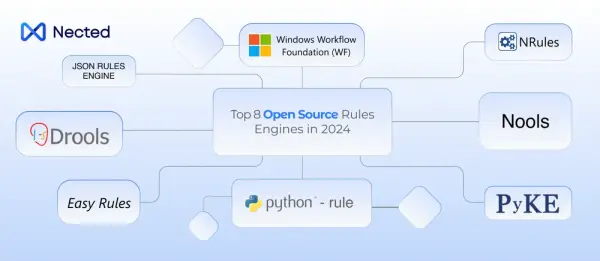




.svg)


.png)

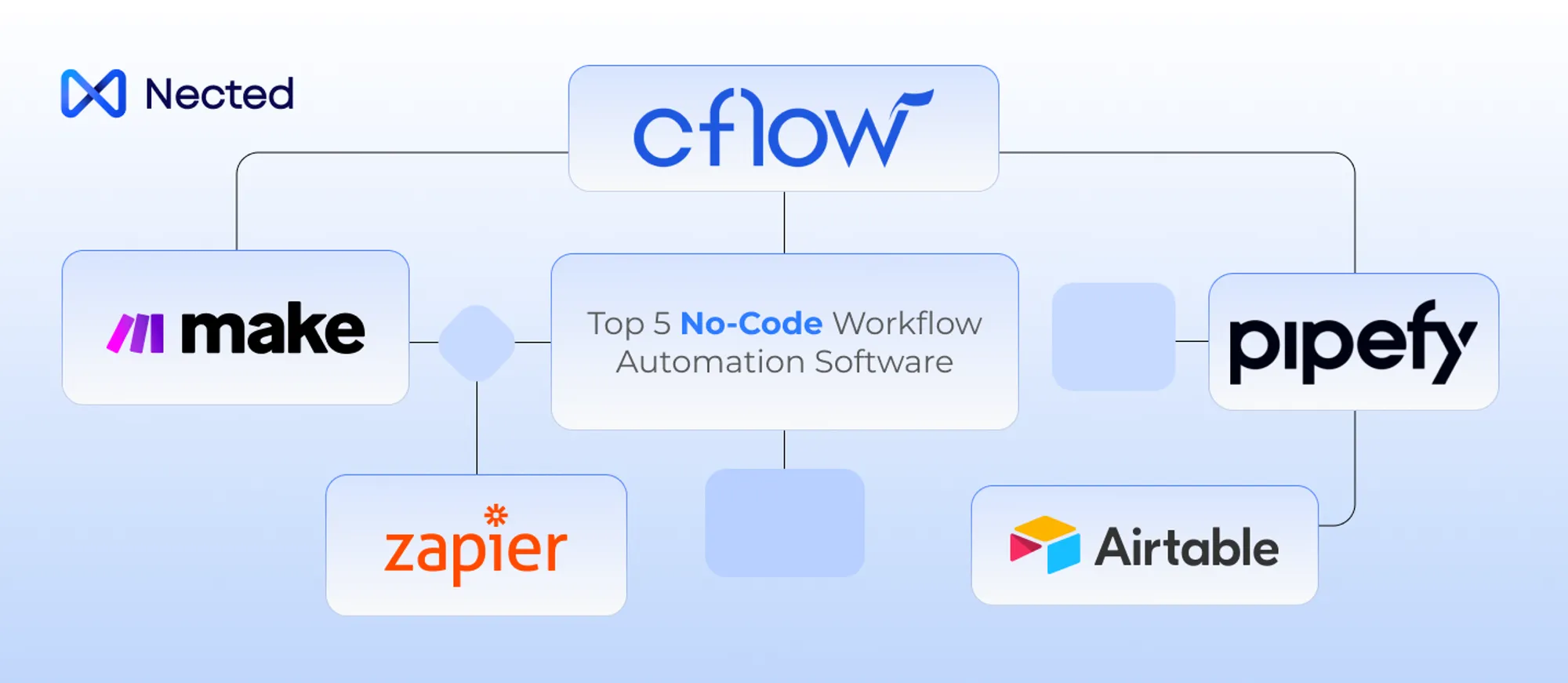
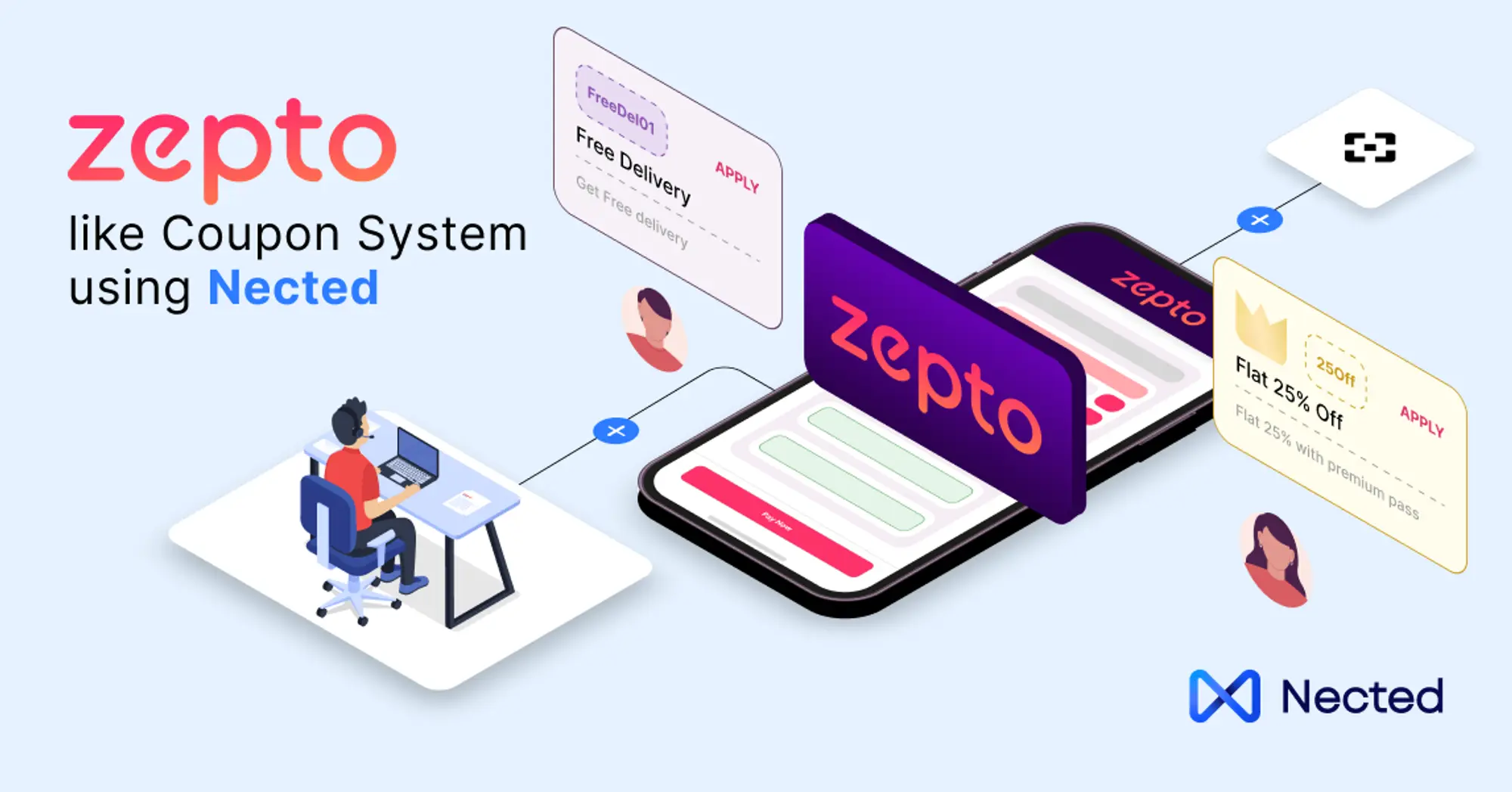
.webp)
.webp)

.webp)


.svg)





.webp)
.svg.webp)


.png)

_result.webp)
.webp)



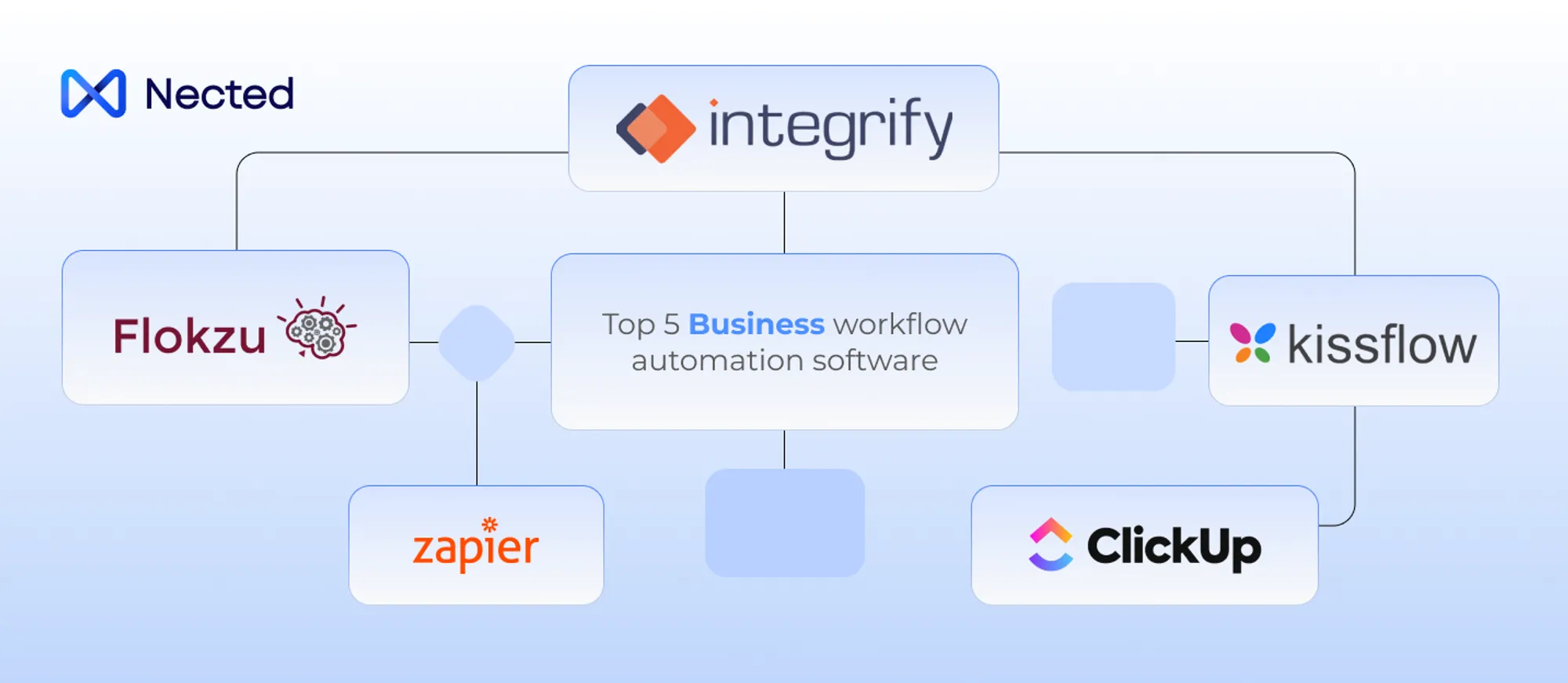
.webp)


%20m.webp)
.webp)
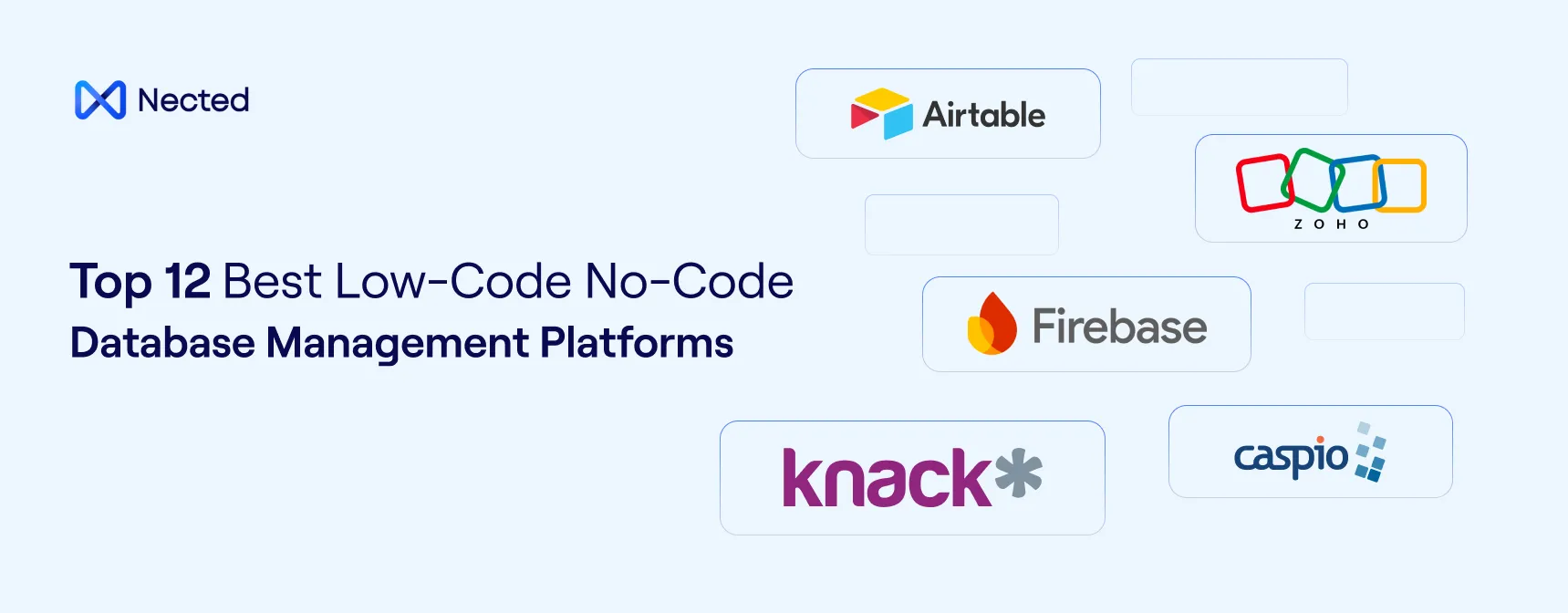

.webp)
.webp)






%20(1).webp)
